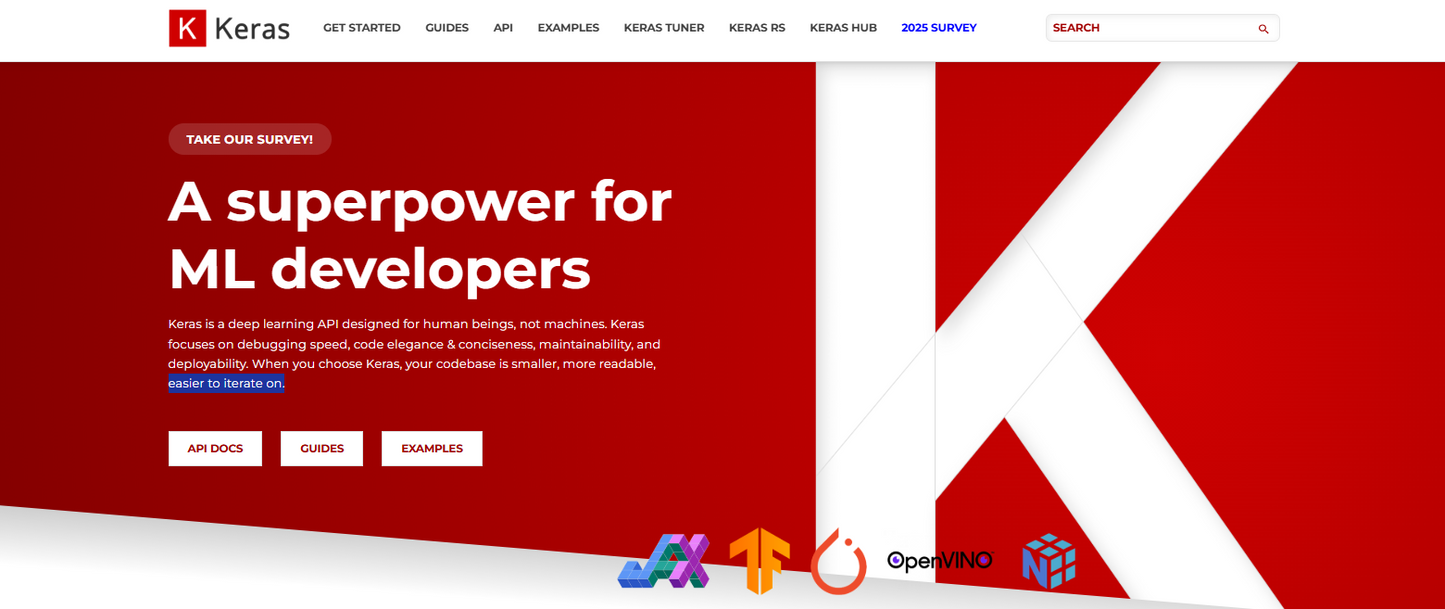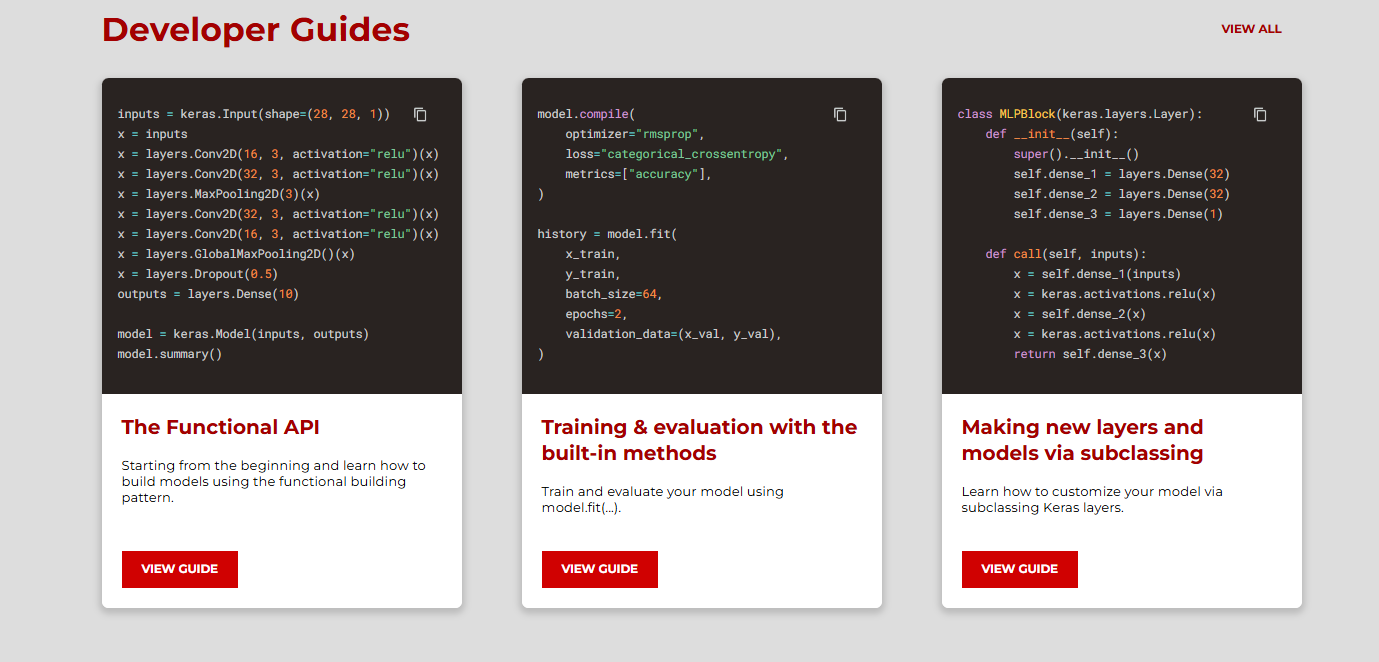Keras – Intuitive Deep Learning Library for Developers and Research 🌎
Keras – Intuitive Deep Learning Library for Developers and Research 🌎
Couldn't load pickup availability
🧠 What is Keras?
Keras is an open-source library for deep learning written in Python. It provides a high-level API that greatly simplifies the development of building, training, and deploying neural networks. Keras works with various backend engines such as TensorFlow, Theano, and previously CNTK. Especially since version 3, Keras has relied on several modern frameworks such as TensorFlow, JAX, and PyTorch as its backend. keras.io +2 keras.io +2
🌟 Advantages and special features
-
Easy to understand and read – code appears simple, clean, and easy to maintain. keras.io +1
-
Fast prototypes possible – models can be quickly set up, tested, and adapted. blog.tensorflow.org +1
-
Modularity – Components can be reused, combined, and even custom layers or loss functions can be created. keras.io +1
-
Multi-framework support – Keras 3 allows the use of TensorFlow, JAX, and PyTorch backends as needed. keras.io
-
Large community and widespread use – Keras is often used in research, teaching, and production projects. IONOS +1
🧭 Vision and Values
Keras aims to make machine learning accessible to everyone—beginners and researchers alike should be able to get started quickly without having to understand complex, low-level details. The focus is on clarity, flexibility, and the best possible user experience 💡.
📦 Product organization
-
Product category : Deep Learning Library, Machine Learning Tool
-
Product type : High-level API, open source software
-
Provider : Open-source project initiated by François Chollet, maintained by community & TensorFlow team
-
Product lines / components : Keras Core API, Keras Layers, Model Subclassing, support for various backends
-
Relevant tags : #DeepLearning 🤖 #MachineLearning #OpenSource 🌱 #Keras #Python #Modeling 🧱
🧰 Application examples
-
Image recognition, segmentation, object recognition for vision projects 🖼️
-
Natural language processing, translation, text classification 📚
-
Research and teaching – developing, comparing and publishing models experimentally
-
Mobile or edge inference, web deployments with Keras models




